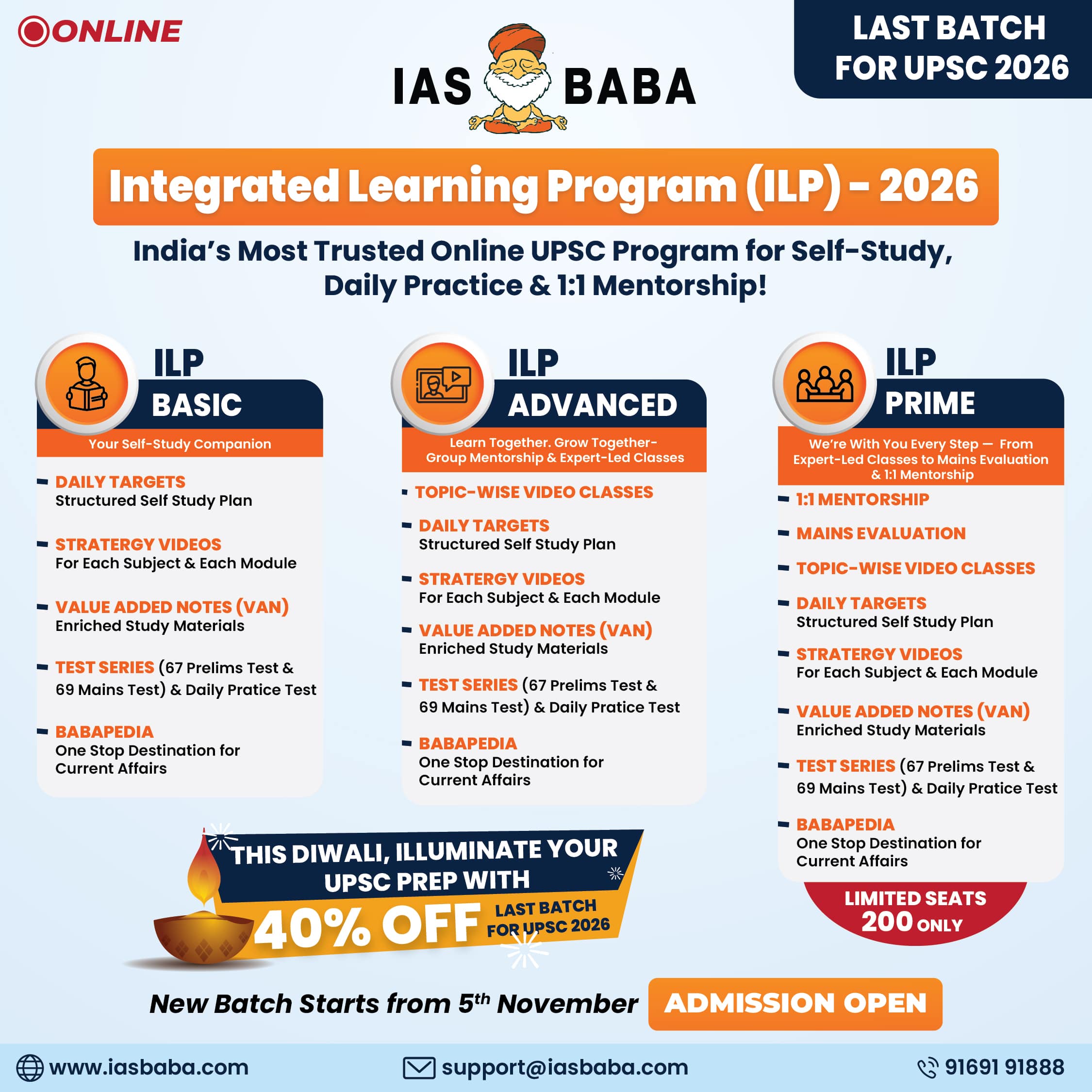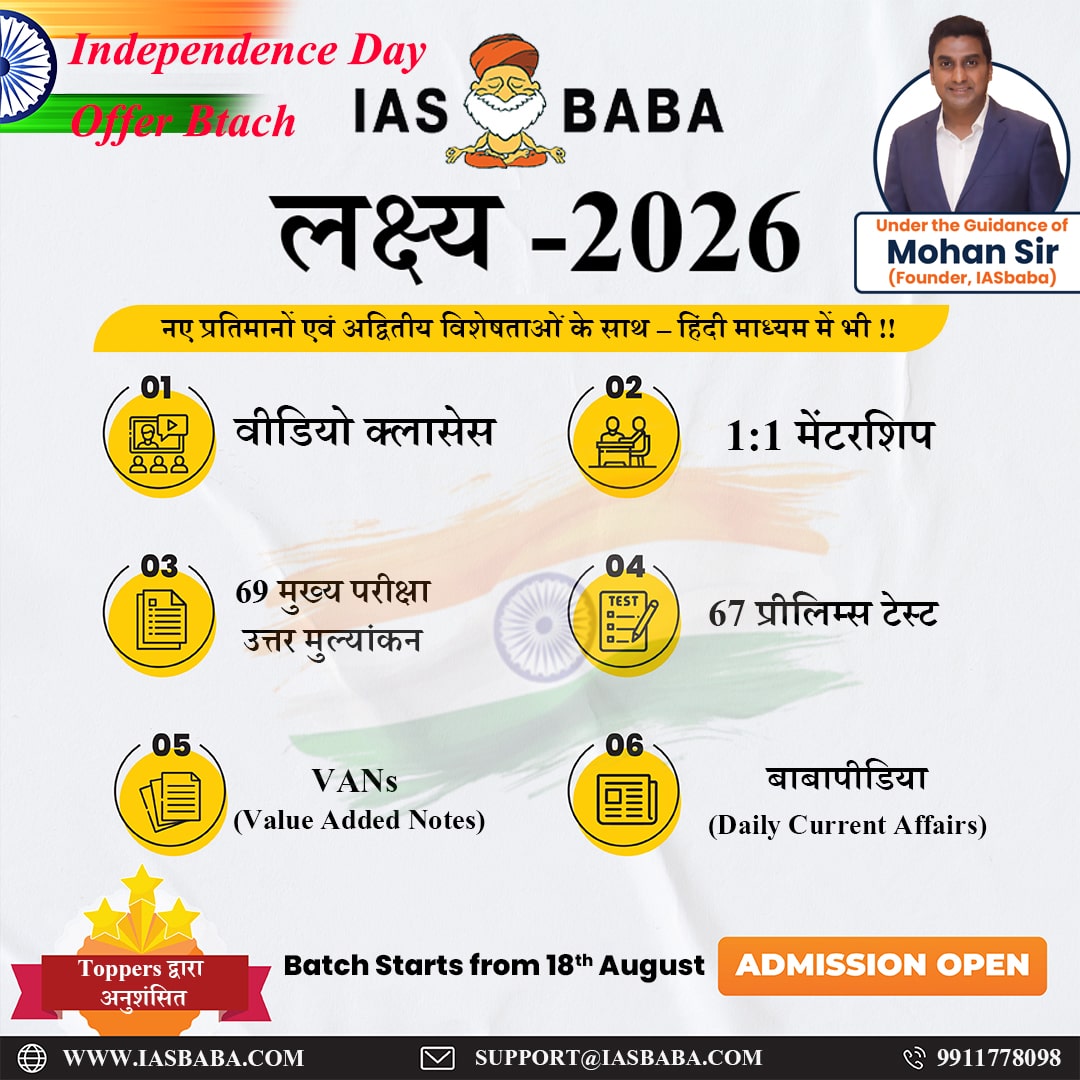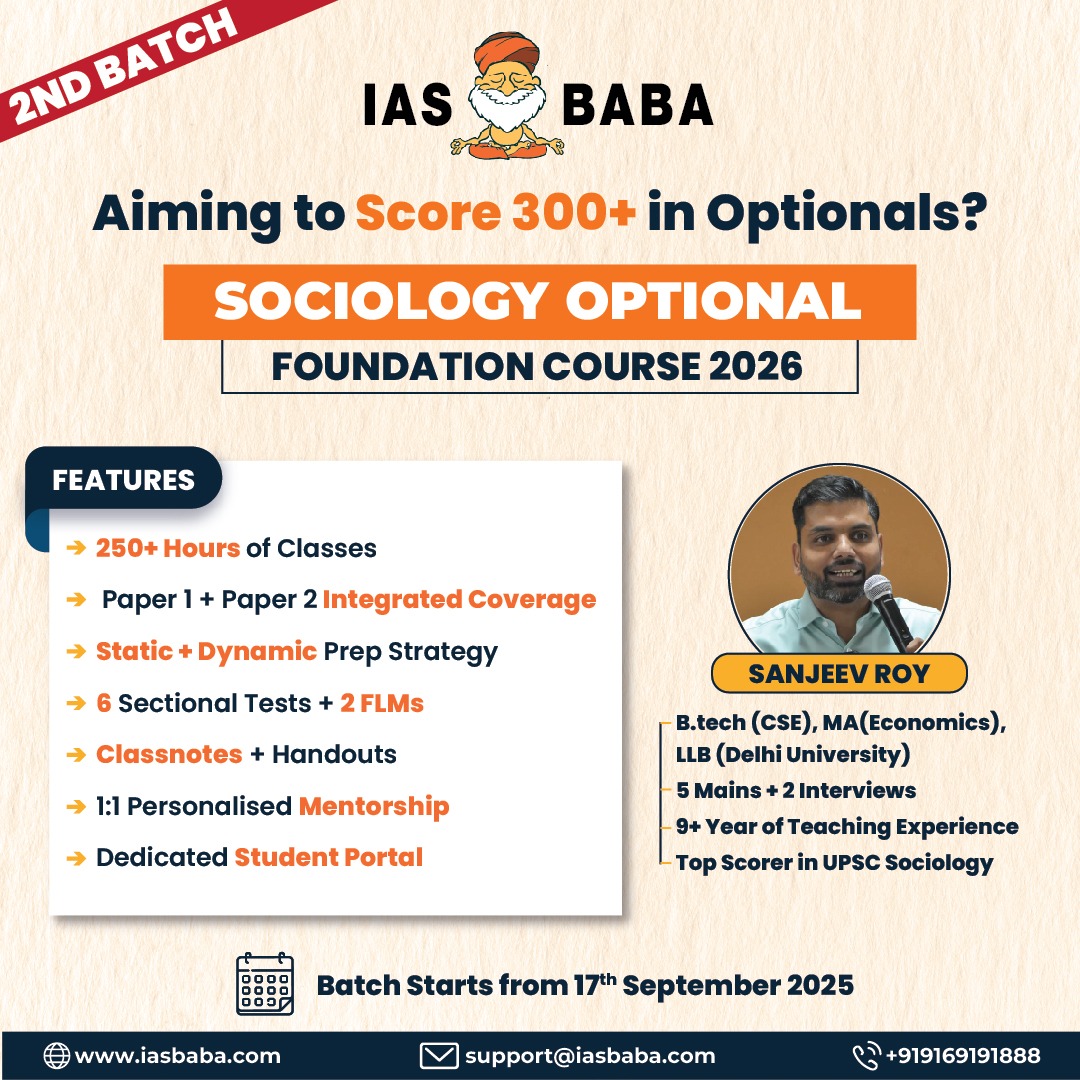IASbaba's Daily Current Affairs Analysis
Archives
(PRELIMS Focus)
Category: Miscellaneous
Context:
- László Krasznahorkai wins Nobel Prize in literature.
About Nobel Prize in Literature 2025:
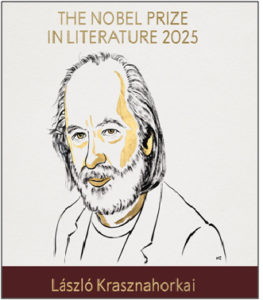
- Awardee: Hungarian writer László Krasznahorkai won the Nobel Prize in Literature 2025.
- Reason for award: His philosophical, bleakly funny novels often unfold in single sentences, and his “compelling and visionary oeuvre, in the midst of apocalyptic terror, reaffirms the power of art.”
- Significance:
- The Nobel judges praised his “artistic gaze which is entirely free of illusion, and which sees through the fragility of the social order combined with his unwavering belief in the power of art.
- The judges applauded his “extraordinary sentences, sentences of incredible length that go to incredible lengths, their tone switching from solemn to madcap to quizzicSal to desolate as they go their wayward way.”
- About the Writer:
- László Krasznahorkai is a great epic writer in the Central European tradition that extends through [Franz] Kafka to Thomas Bernhard, and is characterised by absurdism and grotesque excess.”
- Several works, including his debut, Satantango, and The Melancholy of Resistance were turned into films.
- He also won the National Book Award for Translated Literature in the U.S. in 2019 for Baron Wenckheim’s Homecoming.
Source:
Category: Polity and Governance
- Context:
- Supreme Court said that retrospective age limits under surrogacy law violate reproductive autonomy.
About Surrogacy in India:
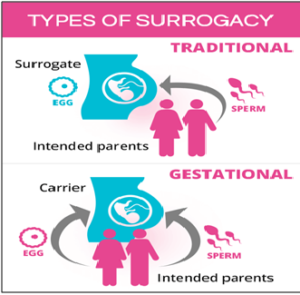
-
- Definition: Surrogacy is an arrangement where a woman (known as the surrogate mother), agrees to carry and deliver a baby for another individual or couple, known as the intended parents.
- Permissibility: Under the Surrogacy (Regulation) Act 2021, Surrogacy is permissible only for altruistic purposes or for couples with proven infertility or disease.
- Prohibition of Commercial surrogacy: Commercial surrogacy, including for sale or exploitation purposes, is strictly prohibited.
- Eligibility for Couples:
- Couples must be married for at least 5 years.
- The wife must be aged between 25-50 years, and the husband between 26-55 years.
- The couple must not have any living child, whether biological, adopted, or through surrogacy, except in cases of children with disabilities or life-threatening disorders.
- Criteria for Surrogate mother:
- The surrogate mother must be a close relative of the couple.
- She must be a married woman with at least one child of her own.
- Her age must be between 25-35 years, and she must have only been a surrogate once in her life.
- Parental Status upon Birth: Upon birth, the child is legally recognized as the biological child of the intended couple.
- Rule for abortion: Abortion of the foetus requires consent from both the surrogate mother and the relevant authorities, following the provisions of the Medical Termination of Pregnancy Act.
Types and Forms of Surrogacy:
- Different types of Surrogacy:
- Traditional Surrogacy: Traditional surrogacy involves using the intended father’s sperm to fertilise the surrogate’s egg. The surrogate carries the pregnancy to term, and the resulting baby is biologically related to the surrogate mother and the intended father.
- Gestational Surrogacy: In gestational surrogacy, the baby is not biologically related to the surrogate. An embryo, created using the intended father’s sperm (or donor sperm) and the biological mother’s egg (or donor egg), is implanted into the surrogate’s uterus for her to carry to term.
- Various forms of Surrogacy:
- Altruistic Surrogacy: It refers to a surrogacy arrangement where the surrogate does not receive financial compensation beyond reimbursement for medical expenses and other related costs. The primary motivation for the surrogate in altruistic surrogacy is typically to help another individual or couple achieve their dream of having a child.
- Commercial Surrogacy: It involves a contractual agreement where the surrogate mother receives financial compensation beyond just reimbursement for medical expenses and other costs associated with the pregnancy. This compensation may vary depending on factors such as location, legal regulations, and the specific terms of the surrogacy agreement.
Source:
Category: Science and Technology
Context:
- Antimicrobial resistance has become, a communication crisis; instead of talking only about the future collapse of healthcare systems, the focus must be on the present impact on individual bodies.
About Antimicrobial Resistance (AMR):
- Definition: Antimicrobial resistance is the resistance acquired by any microorganism (bacteria, viruses, fungi, parasites, etc.) against antimicrobial drugs (such as antibiotics, antifungals, antivirals, antimalarials, and anthelmintics) that are used to treat infections.
- Natural process: It is a natural phenomenon as bacteria evolve, making drugs used to treat infections less effective.
- Formation of superbugs: Microorganisms that develop antimicrobial resistance are sometimes referred to as “superbugs”.
- Global threat: The World Health Organization (WHO) has identified AMR as one of the top ten threats to global health.
- Reasons for the Spread of AMR:
- High burden of communicable diseases, such as tuberculosis, diarrhoea, respiratory infections, etc. that require antimicrobial treatment.
- Hygiene lapses in hospitals and clinics facilitate the spread of resistant bacteria.
- Overprescribing by doctors under pressure from patients (often self-medication), incomplete antibiotic courses, and broad-spectrum antibiotics used unnecessarily create selective pressure for resistant bacteria.
- Unregulated over-the-counter availability and affordability of antibiotics fuel self-medication and inappropriate use.
- Low public understanding of AMR and proper antibiotic use encourages misuse.
- Measures Taken by India to Address AMR:
- National Programme on AMR containment was launched in 2012 to strengthen AMR Surveillance Network by establishing labs in State Medical College.
- National Action Plan on AMR was launched in April 2017 with the aim of involving various stakeholder ministries/departments.
- Indian Council of Medical Research (ICMR) has taken initiatives to develop new drugs /medicines through international collaborations in order to strengthen medical research in AMR.
Source:
Category: International Relations
Context:
- The United Nations will begin slashing its peacekeeping force, as a result of the latest U.S. funding cuts to the world body.
About UN Peacekeeping Force:
- Nature: UN Peacekeeping refers to the activities carried out by the United Nations (UN) to help maintain or restore international peace and security in conflict-affected areas. UN Peacekeepers are also known as ‘Blue Helmets.’
- Origin: It began in 1948 with the establishment of the United Nations Truce Supervision Organization (UNTSO) in the Middle East to monitor ceasefires.
- Objective: It was established to respond to the complex nature of conflicts and to support countries in transition from conflict to peace.
- Working principles: UN Peacekeeping operates under the principles of consent, impartiality, and non-use of force, except in self-defence and defence of the mandate.
- Use of civilians: Although the majority of peacekeepers are military or police, approximately 14% are civilians.
- Mandate: UN Security Council provides mandates to Missions by adopting a resolution.
- Award: It was awarded with Nobel Peace Prize in 1988.
- First Mission: The first UN peacekeeping mission was established in May 1948 when the UN Security Council authorized the deployment of a small number of military observers to the Middle East.
- Major Achievements:
- UN peacekeepers have successfully resolved conflicts in countries such as Cambodia, El Salvador, Mozambique, and Sierra Leone. Overall, interstate conflicts have decreased by 40% since 1945.
- Peacekeepers have protected over 125 million civilians in conflict zones and facilitated the delivery of humanitarian assistance, supporting refugee returns and resettlement.
- They have supported democratic elections in over 75 countries and helped establish functioning government institutions, alongside assisting in security sector reforms and training.
- India’s contributions to Peacekeeping Missions:
- India has been one of the largest cumulative contributors of UN peacekeepers.
- Indian peacekeepers have established themselves as technical experts across missions, particularly in medical support.
- India has provided specialized units like attack helicopters, transport aircraft, and engineering companies.
- India has been instrumental in shaping UN peacekeeping policies, particularly through its presence in the C-34 (Special Committee on Peacekeeping Operations).
Source:
Category: Defence and Security
Context:
- The Indian Air Force (IAF) is set to receive its first light combat aircraft (LCA) Tejas Mk1A in Nashik, marking a significant milestone in India’s indigenous fighter jet programme.
About Tejas Mk1A Fighter Jet:
- Manufactured by: The Tejas Mk1A is an upgraded variant of India’s Light Combat Aircraft (LCA) Tejas, developed by Hindustan Aeronautics Limited (HAL).
- Objective: This version is aimed to enhance operational and combat capabilities, survivability and maintainability over the baseline Mk1.
- Upgraded version of Tejas: Tejas LCA Mk1A is an upgraded variant of India’s indigenous Light Combat Aircraft (LCA) Tejas, developed by HAL.
- Improvements over Tejas: It features over 40 improvements over the Mk1 variant, enhancing its combat capabilities, survivability, and operational efficiency.
- It is equipped with Active Electronically Scanned Array (AESA) radars.
- It features a Unified Electronic Warfare Suite (UEWS) and also includes an Advanced Self-Protection Jammer Pod for improved survivability.
- It also has Upgraded Flight Control Computer (DFCC Mk1A) for better maneuverability and stability.
- It also has reduced weight and improved maintainability, allowing for faster turnaround times during missions.
Source:
(MAINS Focus)
(GS Paper 3: Conservation, Environmental Pollution and Degradation, Environmental Impact Assessment)
Context (Introduction)
Kerala’s proposed amendment to the Wildlife (Protection) Act, 1972 — empowering the State to declare certain species as ‘vermin’ — marks a critical federal moment in India’s environmental governance, balancing local distress with national conservation safeguards.
Main Arguments and Developments
- Federal Assertion in Environmental Governance: The Wildlife (Kerala Amendment) Bill, 2025 seeks powers previously vested in the Union Government, allowing the State to decide when a Schedule II animal can be declared vermin for specific areas and durations.
- Rationale of the Amendment: Kerala cites recurring human–wildlife conflicts, especially with wild boars damaging crops and endangering lives. Multiple unresolved requests to the Centre under Section 62 of the Wildlife (Protection) Act have driven the State to act independently.
- Expanded Administrative Powers: The Bill authorises the Chief Wildlife Warden to order killing, tranquilising, capturing, or translocating any animal that has severely injured a person — powers currently restricted under central oversight.
- Ecological and Ethical Concerns: The move risks normalising lethal solutions over ecological balance. Human expansion into buffer zones has intensified conflict, making wildlife appear as intruders rather than victims of habitat compression.
- Federal Frustration: The Centre’s opaque and delayed decision-making on declaring vermin has created tension. Kerala’s move is both a critique of centralised control and a test of federal flexibility in environmental governance.
Criticisms and Concerns
- Threat to National Conservation Safeguards: Section 62 acts as a national brake against indiscriminate culling. Transferring this power without accountability mechanisms risks eroding conservation baselines and India’s commitments under the Convention on Biological Diversity (CBD).
- Opacity and Lack of Criteria: Whether exercised by the Centre or the State, the absence of transparent, science-based thresholds for declaring animals vermin perpetuates governance opacity.
- Risk of Federal Fragmentation: Uncoordinated state-level decisions could lead to fragmented wildlife protection regimes, weakening India’s cohesive environmental policy framework.
- Ethical and Ecological Implications: The focus on short-term political relief — such as downgrading species protection status — may legitimise lethal shortcuts rather than addressing root causes like encroachment, food scarcity, and poor compensation systems.
- Judicial and Constitutional Tensions: Since wildlife falls under the Concurrent List, any repugnant state law requires Presidential assent. The test lies in whether Kerala’s amendment maintains the “floors” of protection envisaged by the Central Act.
Reforms and Way Forward
- Transparent, Science-based Criteria: Establish clear, data-driven frameworks for classifying species as vermin, ensuring decisions are guided by ecological indicators, not political pressures.
- Strengthening Non-lethal Conflict Mitigation: Promote fencing, compensation schemes, early-warning systems, and community participation rather than defaulting to culling as the first response.
- Institutional Collaboration: Develop Centre–State co-management boards for wildlife governance, enabling faster yet accountable decisions under a uniform legal architecture.
- Baseline and Ceiling Approach: Maintain national “floors” of conservation (no dilution of central safeguards) while allowing states to innovate higher “ceilings” — quicker response mechanisms and decentralised ecological management.
- Incentivising Coexistence: Link compensation, insurance, and eco-tourism rewards to non-lethal interventions, creating economic incentives for local communities to protect wildlife.
Conclusion
Kerala’s move reflects both a cry of ecological distress and a challenge to centralised environmental federalism. While urgency in addressing human–wildlife conflict is undeniable, it must not compromise the principle of conservation integrity. True devolution must empower states with tools, data, and transparency, not with powers of arbitrary exclusion. Federal autonomy should strengthen — not substitute — ecological reason.
Mains Question:
Q. Kerala’s move to amend the Wildlife (Protection) Act, 1972 raises questions about the balance between state autonomy and national ecological safeguards. Examine. (15 marks , 250 words)
(GS Paper 2: India and its Bilateral Relations — India and the United Kingdom)
Context (Introduction)
The India–UK Free Trade Agreement (FTA) signifies a new era of bilateral cooperation, blending trade liberalisation with talent and innovation exchange. Its true potential lies in turning economic ties into sustainable people-centric partnerships.
Recent Developments
- Broadening Economic Partnership: The FTA signed by Prime Ministers Modi and Starmer covers most goods and services. The UK expects £4.8 billion annual gains, while India foresees greater export access for textiles, leather, and specialty goods, boosting employment and MSMEs.
- Shifts in Global Skilled Migration: The US’s increase in H-1B visa fees to $100,000 has pushed Indian firms to diversify talent routes. The UK, through reduced visa fees and expanded “Global Talent” pathways, is positioning itself as a preferred destination for skilled Indian professionals.
- Trade and Innovation Linkages: The FTA promotes cooperation in advanced manufacturing, green technology, and services, aligning with India’s Make in India and Skill India missions. This synergy advances innovation-led growth and strengthens India’s global value chain presence.
- Whisky as a Cross-border Asset Class: Halving of Scotch import duties from 150% to 75% redefines whisky as a financial asset. The Caledonian Malt Fund’s creation signals how tariff reforms can spur cross-border investment and capital market innovation.
- Carbon and Regulatory Challenges: The UK’s proposed Carbon Border Adjustment Mechanism (CBAM) and pending Bilateral Investment Treaty create uncertainty for Indian exporters. Addressing these through green investments and institutional clarity is vital for long-term trust.
Criticisms and Challenges
- Implementation Uncertainty: Parliamentary delays in the UK and domestic lobbying over sensitive sectors could postpone FTA benefits and reduce investor confidence.
- Limited Mobility Gains: The agreement lacks binding provisions on labour mobility, limiting access for India’s IT professionals and skilled workers despite its people-to-people rhetoric.
- Regulatory Barriers: India’s sanitary and phytosanitary restrictions on UK agricultural imports (mangoes, spices, marine products) and differing standards create non-tariff barriers that need harmonisation.
- Uneven Distribution of Gains: The benefits may accrue disproportionately to UK’s high-tech sectors, while India’s MSMEs and small exporters require capacity-building and logistics support to compete effectively.
- Climate and Compliance Pressure: The CBAM could impose additional costs on India’s carbon-intensive sectors like steel and cement unless coupled with domestic carbon credit markets and clean-tech investments.
Reforms and Way Forward
- Institutional Reforms: Finalising the Bilateral Investment Treaty (BIT) with provisions for transparent dispute resolution and tax predictability will strengthen investor confidence and cross-border security.
- Mobility Facilitation: Expanding the Young Professionals Scheme and integrating the FTA with Skill India International Centres can create structured, ethical migration pathways for skilled talent.
- Green and Digital Synergies: Strengthening the India–UK Green Growth Partnership can link trade with sustainability goals, promoting collaboration in renewable energy, green hydrogen, and carbon capture technologies.
- Financial Innovation: Encouraging cross-border fintech platforms, joint investment funds, and mutual recognition of financial products can enhance capital flow and diversify portfolios between the two economies.
- Public Diplomacy and Academia: Promoting educational and research collaborations through initiatives like UKIERI (UK-India Education and Research Initiative), student exchanges, and dual-degree programmes will deepen people-to-people connectivity, the true foundation of bilateral trust and long-term cooperation.
Conclusion
The India–UK FTA is not merely a trade pact but a blueprint for holistic engagement in a fragmented world. Its durability will rest on sustained delivery, mutual openness, and trust across mobility, investment, and education. By linking trade with talent, climate, and culture, India and the UK can craft a partnership that embodies equitable globalisation and shared prosperity.
Mains Question
- The India–UK Free Trade Agreement reflects a shift from trade-centric relations to a broader partnership based on knowledge and sustainability. Discuss.(15 marks, 250 words)








